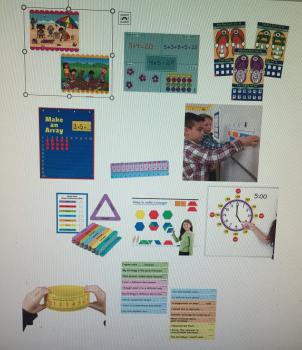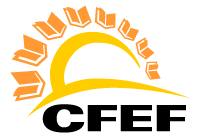
FIND IT FUND IT FLORIDA
Big and Bold: Stepping Stones, From Concrete to Conceptual

- School:
- Golden Gate Elementary
- Subject:
- Special Needs Students
- Teacher:
- Catherine Ellison
- Students Impacted:
- 200
- Grade:
- 3
- Date:
- October 18, 2017
Investor
Thank you to the following investor for funding this grant.
WINGS - $995.88
Goal
For children with learning challenges, there is often a delay in the transition from concrete manipulative math facts like addition and subtraction to the progressively more abstract concepts of multiplication and division, fractions, geometry and problem-solving.
There are multiple steps in this transition. Students need to see, hear and touch each step along the way: where to start, what is second, what is third, etc.
The proposed tools are chosen to assist with students’ learning styles, integrating physical manipulation and grander size for clearer vision and on-task focus. The size, bold colors, and magnetics will facilitate collaborative small–group interaction, individual practice and group teacher demonstration.
Florida’s third grade mathematics curriculum calls for students to independently think aloud about math concepts, explain strategies, and solve problems. We have specific critical areas we want each of our 3rd grade students to be able to say “I can!” about upon entering 4th grade. These tools promote positive learning outcomes in math skills.
What will be done with my students
MULTIPLICATION
For multiplication, the skip counting puzzles and multiplication mats will specifically help with connecting prior math fact knowledge and sequence increments for students.
[LG4: The student will be able to represent and solve problems using various appropriate models. (MAFS.K12.M.4.1)
LG5: The student will be able to represent and solve multiplication situations involving equal groups and be able to explain the strategies used. (MAFS.3.OA.1.1)]
DIVISION
With the Flip-Flop facts and array building visuals, learners can see the relationship between these two number concepts as they solve problems.
[LG10: The student will be able to represent and solve multiplication and division situations and be able to explain the strategies used. (MAFS.3.OA.1.2)
LG11: The student will understand the relationship between multiplication and division and be able to determine the unknown number in a multiplication or division equation. (MAFS.3.OA.2.6)]
FRACTIONS
These ready-to-go rulers and magnetic fractions are tools for students to be able to take the role of sharing and displaying. They also help save time used for drawing out the fractions, when that time can be used to grasp the concept with visuals and explain how it makes sense.
[LG20: The student will understand a fraction as part of a whole and be able to represent fractions using the area model. (MAFS.3.NF.1.1, MAFS.3.G.1.2)
LG21: The student will understand fractions as numbers on a number line and be able to represent fractions on a number line. (MAFS.3.NF.1.2)]
GEOMETRY: MOVING TO QUADRILATERALS AND ON
With learning about shapes, the giant magnetic shapes will follow nicely with the gradual release of a lesson, whether it is introducing the concept with a whole group of students or reteaching it in a small group with students being part of the building and assessment of the characteristics of shapes. Students will also use these to assist their understanding of fractions of wholes.
[MAFS.3.G.1.1: Understand that shapes in different categories (e.g., rhombuses, rectangles, and others) may share attributes (e.g., having four sides), and that the shared attributes can define a larger category (e.g., quadrilaterals). Recognize rhombuses, rectangles, and squares as examples of quadrilaterals, and draw examples of quadrilaterals that do not belong to any of these subcategories.]
ELAPSED TIME
The magnetic clock and rulers provide the important visual link among the different ways we represent and speak about time. The clock face has magnets for reinforcement of telling time for students to see each step as they proceed and adapt their language as they build habits of telling how time changes.
[MAFS.3.MD.1.1 Tell and write time to the nearest minute and measure time intervals in minutes. Solve word problems involving addition and subtraction of time intervals in minutes, e.g., by representing the problem on a number line diagram.]
VERBALIZING MATH STRATEGIES
The math talk sentence stems will be used in student table groups on a daily basis throughout engaging lessons to help learners develop the language, prompting them to share their voice and knowledge by agreeing or disagreeing, explaining, and clarifying. Having these large, clear visuals referred to throughout tasks will be an awesome addition to math discussions!
[LG6: The student will be able to identify and explain arithmetic patterns. (MAFS.13.OA.4.9)
LG7: The student will be able to work accurately and be able to communicate his/her thinking clearly.
LG22: The student will be able to use models to find equivalent fractions and be able to explain his/her thinking. (MAFS.3.NF.1.3)]
SUMMARY
These tools clearly show the path and the relationships of various parts and wholes. The tools allow for group teaching because they are big and bold and colorful. They also allow students to manipulate physical concrete parts at their own pace, in order to understand each mathematical concept.
Benefits to my students
Third grade is an important transitional grade, from concrete to conceptual, from facts to strategies, into being able to explain strategies of math problem solving.
Many students thrive on kinesthetic, tactile visuals to really “get” how things work; therefore, the benefit for each proposed tool is to have another distinct stepping stone in this sometimes-tough transition as they multiply, divide, fractionate, understand shapes and time concepts, as well as begin to go into more detail when describing math strategies.
Let’s surround our learners with focused visuals to help them see and converse about connections from one number to the next. Let’s boldly go, step-by-step from the concrete to the conceptual in 3rd grade math skills!
Budget Narrative
There are one to two math tools chosen for each 3rd grade critical area focused on for math, based on grade-level state standards.
Multiplication tools: skip-counting puzzles and dry-erase multiplication mats
Division Breakdowns: flip-flop dry-erase boards and array builder chart
Measuring in fractions: marked measurement rulers and magnetic pieces
Exploring shapes: construction sticks and giant pattern blocks
Elapsed time measurement: magnetic clock and elapsed time rulers
Student Discussion and Oral explanations: math talking stems
We are asking for a full set of tools for each of our 5 3rd grade math classrooms at Golden Gate Elementary. Every classroom has students with various learning styles and needs who will benefit from these big and bold learning manipulatives in reaching grade level standards.
Per classroom:
Subtotal: 182.73
Shipping and handling: $16.45
Total: $199.18
Per 3rd grade learner = about $5
Items
| # | Item | Cost |
|---|---|---|
| 1 | Picture Sticks Skip Counting (5 sets) | $49.95 |
| 2 | Flip Flop Fact Families (5 sets) | $54.95 |
| 3 | Array Pocket Chart (5 sets) | $84.95 |
| 4 | Multiplication Strategy Mats (5 sets) | $49.95 |
| 5 | Fraction Measurement Rulers (10 sets) | $129.90 |
| 6 | Magnetic Fraction Number Line (5 sets) | $124.75 |
| 7 | Magnetic Clock Face (5 sets) | $64.95 |
| 8 | Elapsed Time Rulers (5 sets) | $119.40 |
| 9 | Shape-Construction Sticks (5 sets) | $64.95 |
| 10 | Giant Magnetic Shapes (5 sets) | $114.95 |
| 11 | Math Talk Sentence Stems (5 sets) | $54.95 |
| 12 | shipping and handling | $82.23 |
| Total: | $995.88 |





Share
Please share this page to help in fulfilling this grant.
Email to a Friend